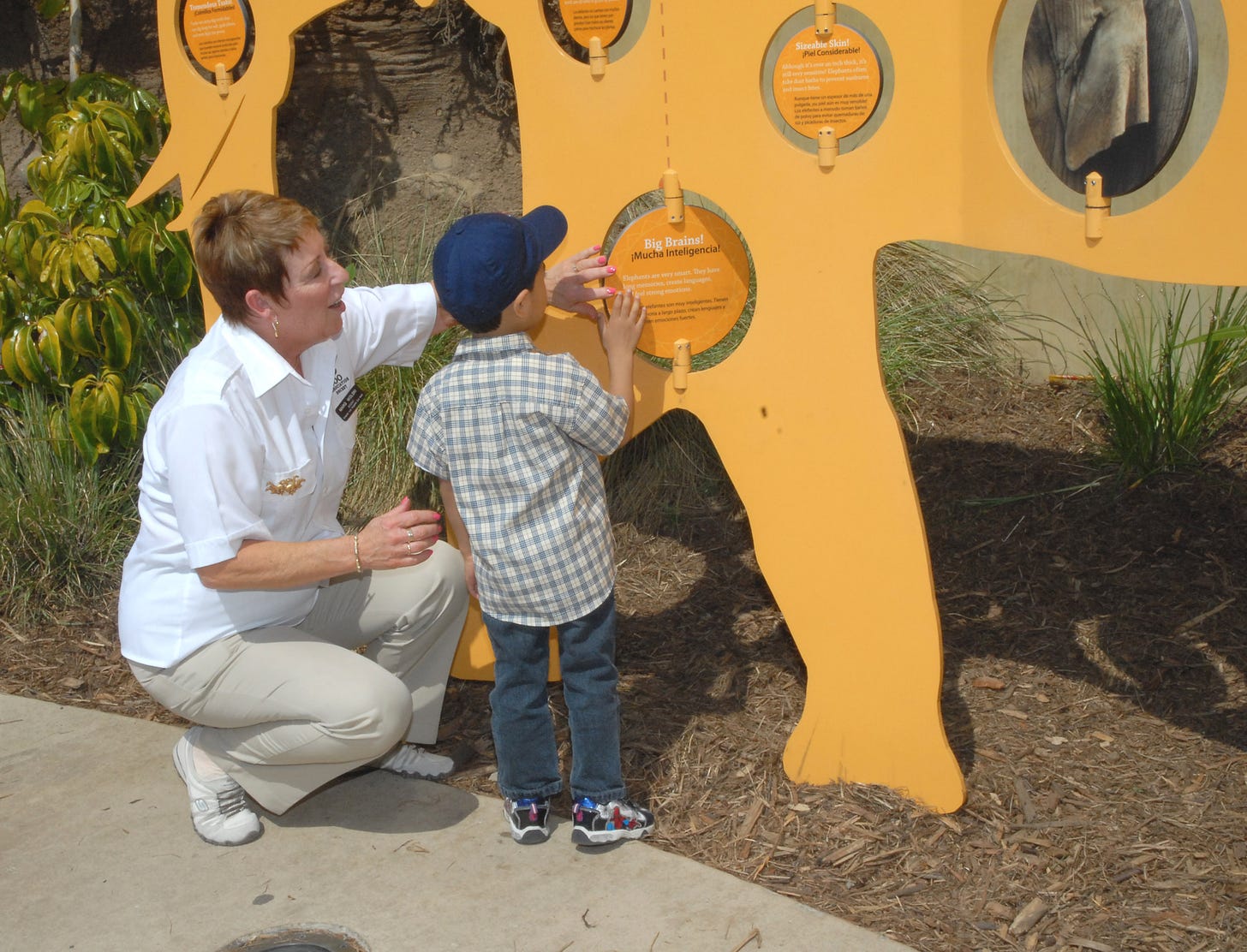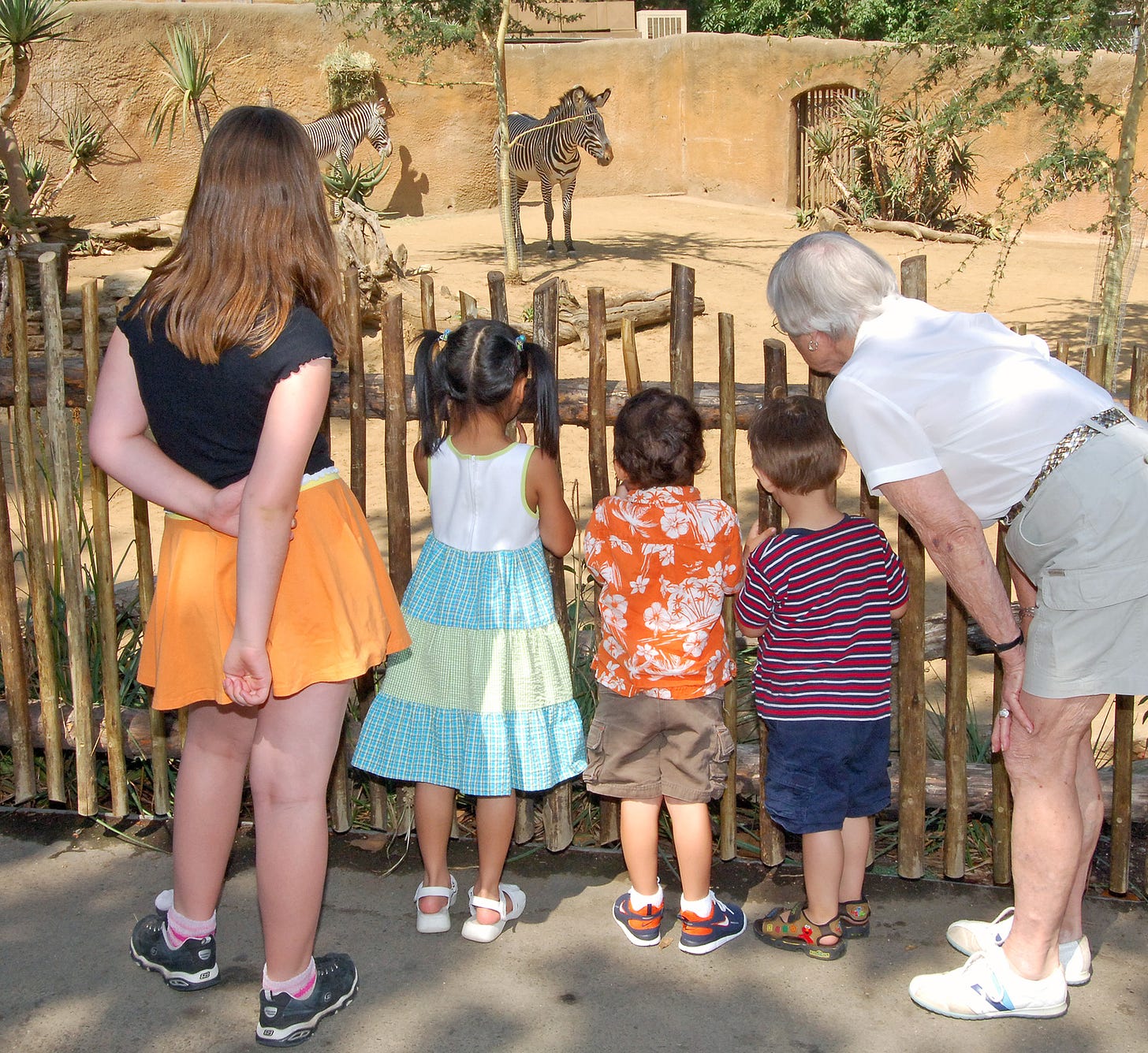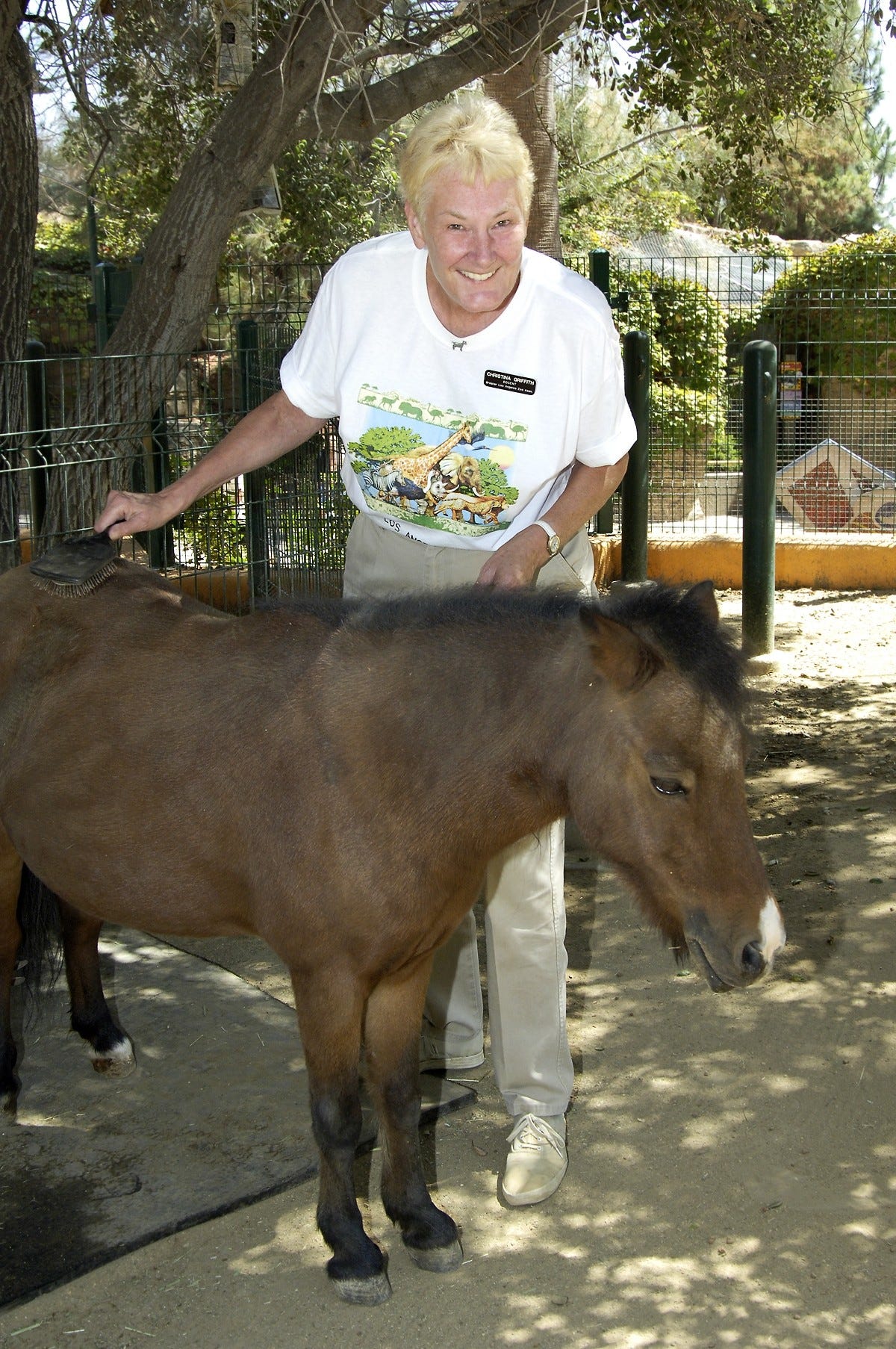Docent Corps: The LA Zoo’s Conduit for Teaching Natural History and Conservation Education
An Interview With LA Zoo Educators
By Jordan Schaul | National Geographic | December 5, 2013
Derived from the Latin word docēns, which means to teach or lecture, a “docent” at a natural history museum, zoo, or aquarium is more than just a well-recognized uniformed volunteer answering questions for visitors. At the non-profit cultural attractions they serve, docents are integral players in natural history education and a primary conduit for teaching...
Derived from the Latin word docēns, which means to teach or lecture, a “docent” at a natural history museum, zoo, or aquarium is more than just a well-recognized uniformed volunteer answering questions for visitors.
At the non-profit cultural attractions they serve, docents are integral players in natural history education and a primary conduit for teaching the populous about biodiversity and significant threats to the natural world and natural processes.
In informal learning settings, like zoos and museums, the docent corps is often the primary source for disseminating and interpreting information to the public about the living or non-living animal collections in zoos and museums and the ecosystems their wild conspecifics service.
The reach of the zoo docent is immense and the opportunities for instruction are endless.
In fact, according to the World Conservation Union (International Union for the Conservation of Nature), 125 million people visit zoos, aquariums, and museums on the European continent every year.
In the United States alone, the 223 zoos and aquariums that are currently accredited by the Association of Zoos and Aquariums reach nearly 180 million visitors a year, 50 million of which are children.
University of Washington’s associate professor of learning sciences Philip Bell, co-chair of a National Academies science education committee said in reference to a 2009 report on informal learning that “learning is broader than schooling, and informal science environments and experiences play a crucial role.”
I know, first-hand, that many docents spent countless hours in the library reading natural history texts, but I had no idea how rigorous the requirements were to become a docent in the first place.
So I decided, recently, to apply to become a docent for the Greater Los Angeles Zoo Association which services the Los Angeles Zoo as an auxiliary organization.
INTERVIEW:
JORDAN SCHAUL: Can you first tell us about the educational mission of the Greater Los Angeles Zoo Association (GLAZA)?Greater Los Angeles Zoo Docent Marg Wolsky at Elephants of Asia with a Zoo resident
CREDIT: Tad Motoyama
The private, non-profit Greater Los Angeles Zoo Association, founded in 1963, has funded plant and animal exhibits, species conservation, capital projects, and education and community outreach programs at the Los Angeles Zoo and Botanical Gardens for more than five decades. GLAZA also builds and invests endowment funds and operates six essential departments on behalf of the L.A. Zoo: development, marketing, publications, membership, volunteers, and oversight of the food and retail concessions. There are 65,000 member households in GLAZA representing more than 240,000 adults and children, the largest membership base of a cultural organization in Los Angeles. With GLAZA’s volunteer corps comprised of more than 800 individuals, its educational mission is a top priority.
JORDAN SCHAUL: Before we discuss the docent program can you talk a bit about the scope of volunteer opportunities through GLAZA?
KIRIN DAUGHARTY (MANAGER OF VOLUNTEER PROGRAMS, GREATER LOS ANGELES ZOO ASSOCIATION): GLAZA offers a range of volunteer opportunities to meet the needs of those seeking a meaningful (and fun!) volunteer experience and the needs of the Zoo.
The docent program was born alongside GLAZA in 1963, and in 1975 the training for the program became a UCLA accredited extension course and remains so to this day. The 23-week class provides a solid foundation in plant and animal taxonomy as well as teaching future docents how to inform and educate the public about conservation. Once docents graduate from the class, they are prepared to lead school and member tours, participate in our many education programs such as Animals & You, Special Needs Outreach, Speakers Bureau, Classroom Safari, and as ambassadors on- and off-grounds.
Our student volunteer program is available to those in the tenth grade. Similar to the docent training, student volunteers learn about abbreviated taxonomy as well as conservation, biomes, and plant/animal adaptations. Once the students graduate from their 13-week training, they are prepared to lead conversations with the public at education stations such as our “Trunks as Tools” at our award-winning Elephants of Asia exhibit and our “Enviroscape” in front of Sea Life Cliffs.
Both the docent and student volunteer programs require at least a two-year commitment with 100 and 60 hours per year, respectively, and passing an annual written test.
We also offer a general volunteer program that fills many other areas on the grounds and behind the scenes. General volunteers assist at Muriel’s Ranch (the Zoo’s contact yard), playing liaison between the animals and the guests. They assist as ambassadors on grounds to help visitors find their way, and behind the scenes for animal care with food prep and enrichment.
And finally, we have research volunteers, who are required to take the UCLA Extension course “Observing Animals: Behavioral Studies in Zoos” offered each fall by the Zoo’s Director of Research, Dr. Cathleen Cox. This 11-week class prepares students for using non-intrusive observational techniques and practices. Research volunteers may be called in to observe an individual or group of animals that have been recently introduced to each other, monitor for breeding behavior, or serve in part of larger studies organized by multiple organizations.
Many zoos’ enrichment is provided by animal care staff but the L.A. Zoo has a department dedicated solely towards the enrichment needs of the Zoo. GLAZA has one of the largest Enrichment volunteer programs, with two staff members and over 30 dedicated volunteers. Some volunteers meet each weekend to create enrichment devices, work on exhibit adaptations, and help in our edible garden, while others help with a group of exhibits or “strings” each week creating enrichment devices for specific animals.
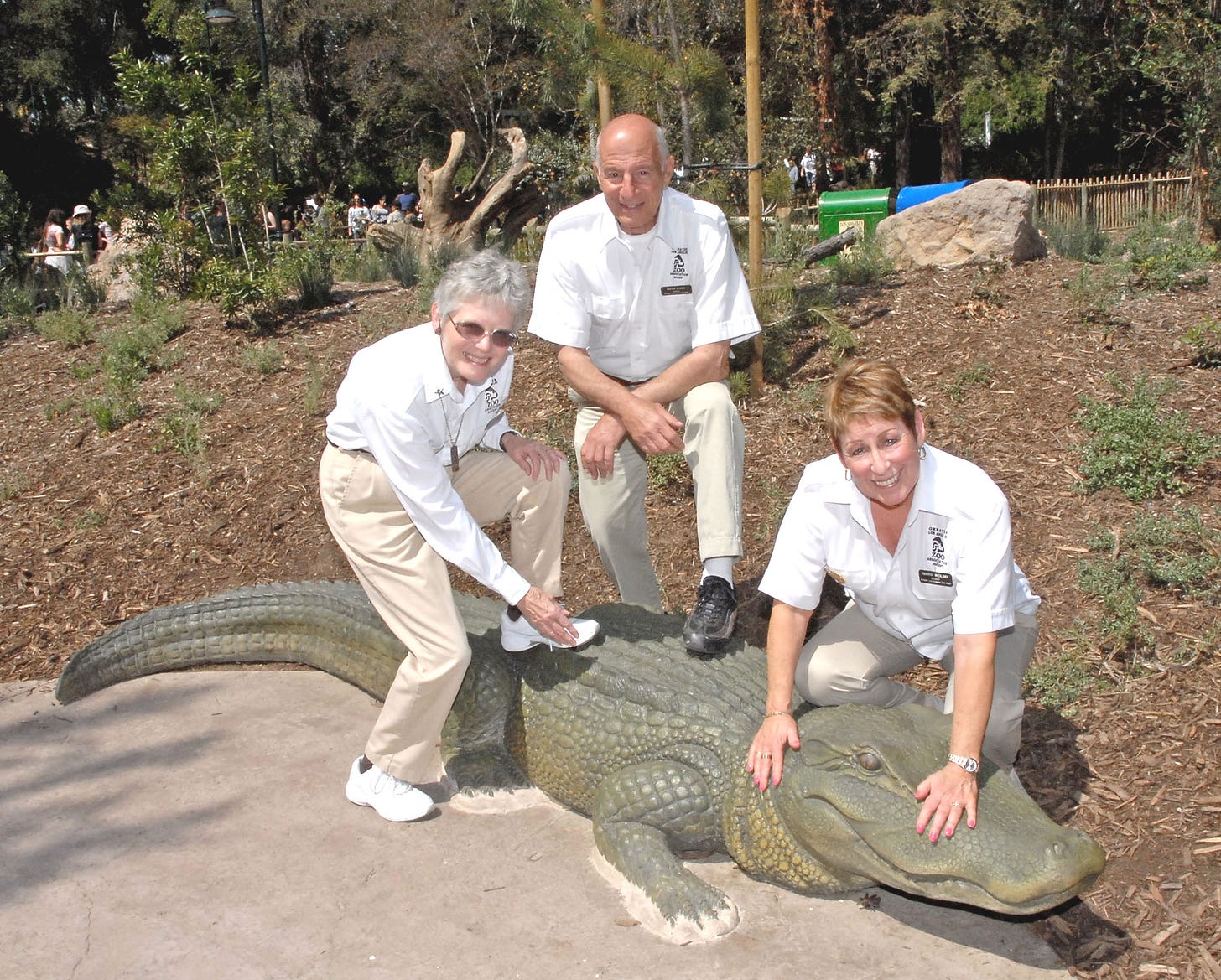
KIRIN DAUGHARTY: Docents play the valuable role of being both the face and voice of the Zoo to our guests. They represent and help communicate the Zoo’s mission of “nurturing wildlife and enriching the human experience,” and they do it in fun ways. Most people who visit a zoo are seeking a place of recreation or entertainment, rarely an educational experience, but the docents have a gift of educating and entertaining with their enthusiasm for the field.
As one of two staff members guiding over 800 volunteers, our role is to recruit, staff, manage and recognize the volunteers’ involvement in our institution. To best lead this valuable group of people, it is important to understand why each volunteer chooses to give their time to the L.A. Zoo. Therefore, much of our time as administrators of volunteers is spent getting to know the people in our programs and what motivated them to join our ranks. I find my former GLAZA docent experiences invaluable resources to remind me of the volunteer perspective, for example, what brought me to the Zoo, what kept me here, what tools were available to help me help the institution?
Because volunteering is usually a social experience, much of our communications are casual conversations. This is the best way to understand their motivations so we can best meet their needs and recognize the volunteers’ contributions.
As the Manager of Volunteer Programs, I consider myself one of the lucky ones. How many professionals assist a group of people who consider it their privilege to help out and who start their day excited and with positive attitudes? Many touring day afternoons are spent listening to docent tales of their morning tours and the great kids they lead around the Zoo. Occasionally there are stories of patrons acting out and not being respectful of each other or the animals, which docents are trained to handle. But fortunately the good heavily outweighs those challenges and that’s what brings everyone back.
JORDAN SCHAUL: I commend zoo docents because of the body of knowledge they often acquire regarding the natural history of wildlife. It sometimes even compares to or exceeds that of some animal care professionals. I know that while I was focused on exotic animal husbandry issues at work while concurrently pursuing graduate study in specific areas of zoology and veterinary science, I had little time to catch up on some of the natural history topics—even topics of relevance to the animals I cared for. In the meantime, my docent colleagues, many of them retired, were building quite a background in natural history science for a great diversity of taxa and exploring topics of interest to the general public. They also receive quite rigorous training before they can even graduate to the coveted volunteer role. Can you talk about GLAZA’s docent training program?
KIRIN DAUGHARTY: The Greater Los Angeles Zoo Association docent receives extensive training before they can wear the GLAZA Docent uniform and badge. The 23-week UCLA accredited extension course is equivalent to a 100 level biology course covering plant and animal taxonomy, biomes, and international conservation issues. I believe this is the only zoo-docent program in the U.S. that requires a college-level course. Some may say this is excessive given our average tour group is elementary school level. But the training encompasses more than just content, and application as well. They learn interpretive methods as well as addressing the current science standards for Life Sciences for California public schools K-12. And often docents can sign up to lead college tours, so an in-depth understanding of the flora and fauna at the L.A. Zoo is essential.
JORDAN SCHAUL: I learned that as many as 10 other PhD-holding candidates preceded me in the 2013 interview process including two others with degrees in the life sciences. Can you talk about the composition of the volunteers in your docent program? You have some talented and highly qualified people in positions that enable them to really impact the learning experience for your visitors.
KIRIN DAUGHARTY: GLAZA docents are a varied group of individuals with a broad range of backgrounds and talents. There are former corporate presidents, VP’s, CFOs, CEOs; many educators from K-college; those in the sciences, arts, medical, political fields such as former mayors, judges, and lawyers, as well as police force and fire departments. With the entertainment industry so close by, we have set builders, prop makers, writers, producers, artists, and actors; …the list seems endless with almost as many backgrounds as docents. Each brings with them their own perspective that provides an added depth to both the program and touring experiences.
JORDAN SCHAUL: Zoo animal keepers are also quite knowledgeable, but they have a different focus. The docents often complement these animal husbandry professionals in their work. I find that they can learn a great deal from each other. Can you discuss how they interface in an effort to make the Zoo an informal learning venue on host of topics relevant to the natural world?
KIRIN DAUGHARTY: Docents occupy a unique position of communicating the important role of animal care as well as the mission of the Zoo, which states: To serve the community, the Los Angeles Zoo will create an environment for recreation and discovery; inspire an appreciation of wildlife through exhibitry and education; ensure the highest level of animal welfare; and support programs that preserve biodiversity and conserve the natural habitat. Most docents are attracted to the Zoo’s program because of the animals; they want to learn about them, they want to teach others about them, they want to help behind the scenes, or want to play a role in conservation. This noble approach can be a challenge for a docent who is talking with a group with minimal interest in learning about the animal in front of them. But for our creative docents, will be able to find a connection, no matter how small. It can be a common behavior or trait or something simple, just as long as the visitors see the animal differently after the end of their encounter. It doesn’t have to be drastic and world-changing. The best connections are sometimes generated by a small comment that lingers in their psyche. Their “aha” moment might not occur in front of the exhibit, or even at the zoo, but days later. Although the docent might not get to experience the effects of their comment, it had an impact and that’s all that’s important in the end.
For information about the Greater Los Angeles Zoo Association’s docent and volunteer programs, please visit http://www.lazoo.org/support/volunteer/index.html or call (323) 644-4703.
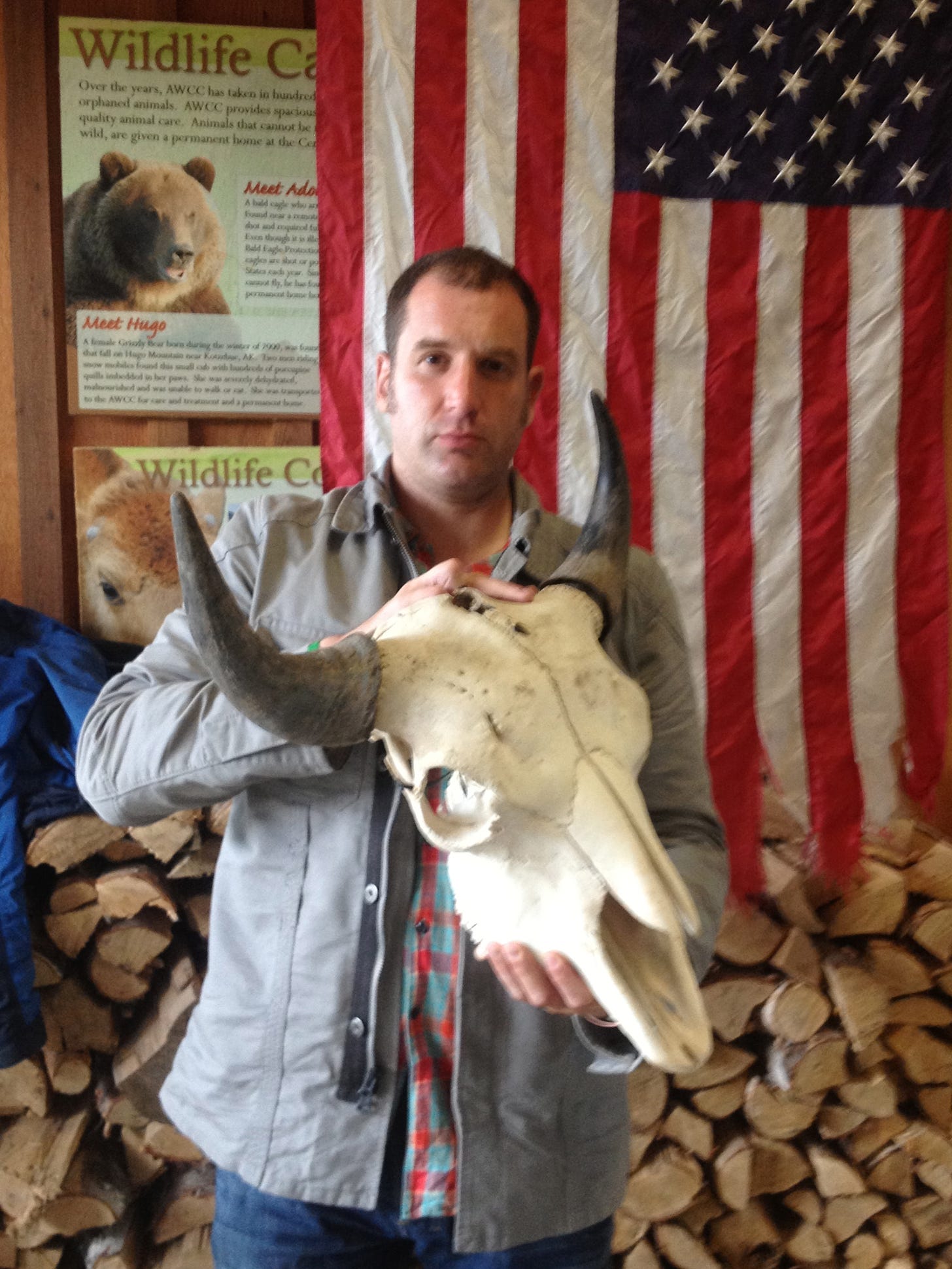
Dr. Jordan Carlton Schaul is an American zoologist, conservationist, journalist, animal trainer, and former zookeeper based in Los Angeles, California. He is a member of the IUCN-World Conservation Union’s Conservation Education Commission.
ABOUT NATIONAL GEOGRAPHIC SOCIETY
The National Geographic Society is a global nonprofit organization that uses the power of science, exploration, education and storytelling to illuminate and protect the wonder of our world. Since 1888, National Geographic has pushed the boundaries of exploration, investing in bold people and transformative ideas, providing more than 14,000 grants for work across all seven continents, reaching 3 million students each year through education offerings, and engaging audiences around the globe through signature experiences, stories and content. To learn more, visit www.nationalgeographic.org or follow us on Instagram, Twitter and Facebook.
MEET THE AUTHOR
Jordan Carlton Schaul With training in wildlife ecology, conservation medicine and comparative psychology, Dr. Schaul's contributions to Nat Geo Voices have covered a range of environmental and social topics. He draws particular attention to the plight of imperiled species highlighting issues at the juncture or nexus of sorta situ wildlife conservation and applied animal welfare. Sorta situ conservation practices are comprised of scientific management and stewardship of animal populations ex situ (in captivity / 'in human care') and in situ (free-ranging / 'in nature'). He also has a background in behavior management and training of companion animals and captive wildlife, as well as conservation marketing and digital publicity. Jordan has shared interviews with colleagues and public figures, as well as editorial news content. In addition, he has posted narratives describing his own work, which include the following examples: • Restoration of wood bison to the Interior of Alaska while (While Animal Curator at Alaska Wildlife Conservation Center and courtesy professor at the University of Alaska) • Rehabilitation of orphaned sloth bears exploited for tourists in South Asia (While executive consultant 'in-residence' at the Agra Bear Rescue Center managed by Wildlife SOS) • Censusing small wild cat (e.g. ocelot and margay) populations in the montane cloud forests of Costa Rica for popular publications with 'The Cat Whisperer' Mieshelle Nagelschneider • Evaluating the impact of ecotourism on marine mammal population stability and welfare off the coast of Mexico's Sea of Cortez (With Boston University's marine science program) Jordan was a director on boards of non-profit wildlife conservation organizations serving nations in Africa, North and South America and Southeast Asia. He is also a consultant to a human-wildlife conflict mitigation organization in the Pacific Northwest. Following animal curatorships in Alaska and California, he served as a charter board member of a zoo advocacy and outreach organization and later as its executive director. Jordan was a member of the Communication and Education Commission of the International Union for the Conservation of Nature (CEC-IUCN) and the Bear Specialist Group of the IUCN Species Survival Commission (BSG-SSC-IUCN). He has served on the advisory council of the National Wildlife Humane Society and in service to the Bear Taxon Advisory Group of the Association of Zoos and Aquariums (AZA Bear TAG). In addition, he was an ex officio member of the council of the International Association for Bear Research and Management. Contact Email: jordan@jordanschaul.com http://www.facebook.com/jordan.schaul https://www.linkedin.com/in/jordanschaul/ www.jordanschaul.com www.bicoastalreputationmanagement.com



